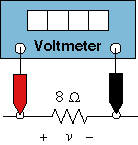Topics: "Review": AC, DC and dynamic circuits.
Reading:
- Circuits with capacitors or inductors: Sections 7.2, 7.5, 7.8.
- First-order circuits: Sections 8.3, 8.6, 8.9.
- Thevenin and Norton equivalent circuits: Sections 5.4 and 5.5
- Stability of first-order circuits: Section 8.5
- Propagation delay: Section 8.11
- Step functions: Section 8.6.
- Verifying the response of first-order circuits: Section 8.10.
- Analysis of AC circuits: Sections 10.6 thru 10.16.
- Design of AC circuits: Section 10.17.
Lecture Notes:
- Identifying various types of circuit.
- An example illustrating various types of
linear electric circuit.
- Using node equations to analyze AC circuits.
- A step-by-step procedure for analyzing first-order circuits.
- Worked examples illustrating the step-by-step procedure.
- Consider a linear circuit having a single input and a single output. Suppose that
- The input is a unit step function, u(t). (The circuit will
contain a single independent voltage or current source. The input is the
voltage of the voltage source or the current of the current source.)
- All initial conditions are zero. (The initial conditions are the
initial capacitor voltages and initial inductor currents.)
Then the output of the circuit is called the step response of the circuit.
- We can measure the step response of a linear circuit in the lab.
- Use a function generator to provide a square wave input.
- Adjust the voltages of the square wave to 0 V and 1 V.
- Adjust the period of the square so that the circuit reaches steady state
during each half of the square wave.
- The response to the 0 to 1 transition of the square wave is the step
response of the circuit.
- Given a plot of the response of a first-order circuit, we can determine an equation
that represents that response. Here are some examples
that show how it's done.
- We can represent a dynamic equation by a set of differential equations called the
state equations. We can write a MATLAB script
that will solve the state equations and plot the response of the dynamic circuit.
- We consider the problem of designing ac circuits to have specified input and output sinusoids.
- Handout: Determine component values so that these circuits
have the specified input and output sinusoids.
Notice that, given the input sinusoid, each circuit imposes restrictions on the amplitude and
phase angle of the output sinusoid. In particular, the amplitude of the outputs of these
example circuits cannot be larger than the amplitudes of the inputs.
( Here's the solution to the problem that we worked in class.)
- Table: Here is a set of op amp circuits that can be
used to design ac circuits to have specified input and output sinusoids. In particular:
- The amplitude of the output can be either larger or smaller than the amplitude of the input.
- The difference between the phase angle of the output and the phase angle of the input is
called the phase shift of the circuit. Each circuit can produce only a limited range of phase shifts,
but together these circuits can produce any whatever phase shift is needed. Indeed, the required
phase shift determines which of these circuits we choose.
- Exercises: Design circuits to have these specified input and output sinusoids.
 |
|
Practice: Electric Circuit Study Applets
|
|